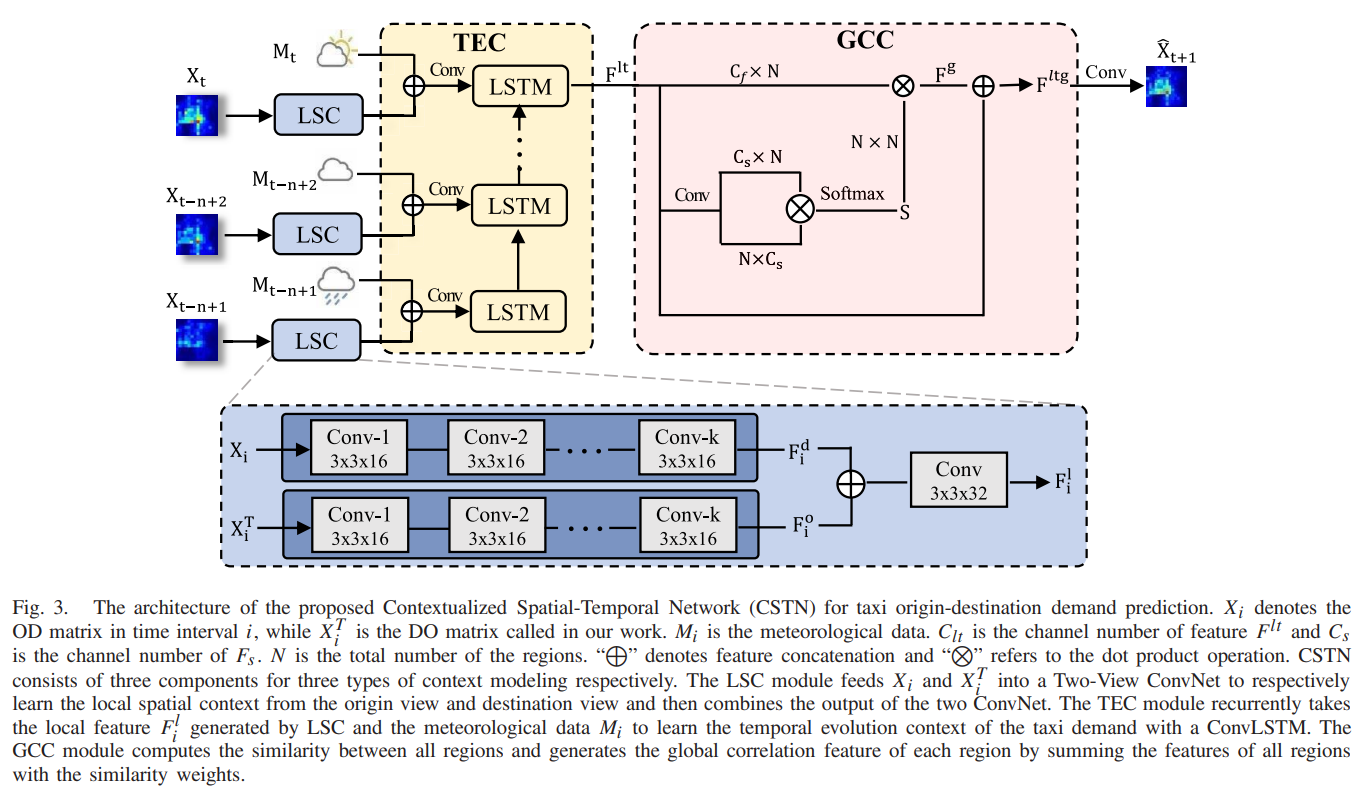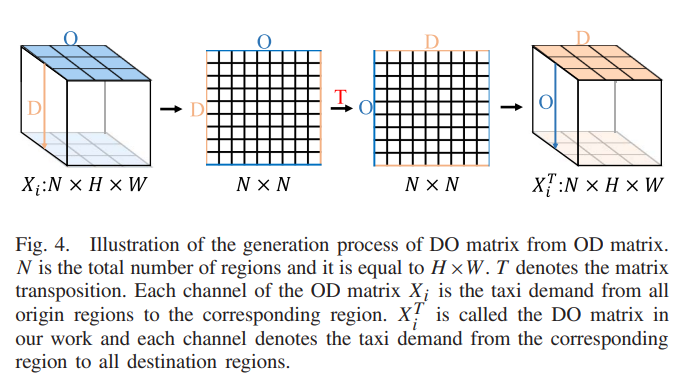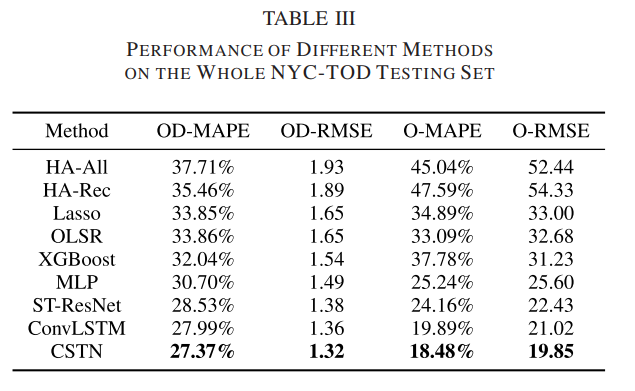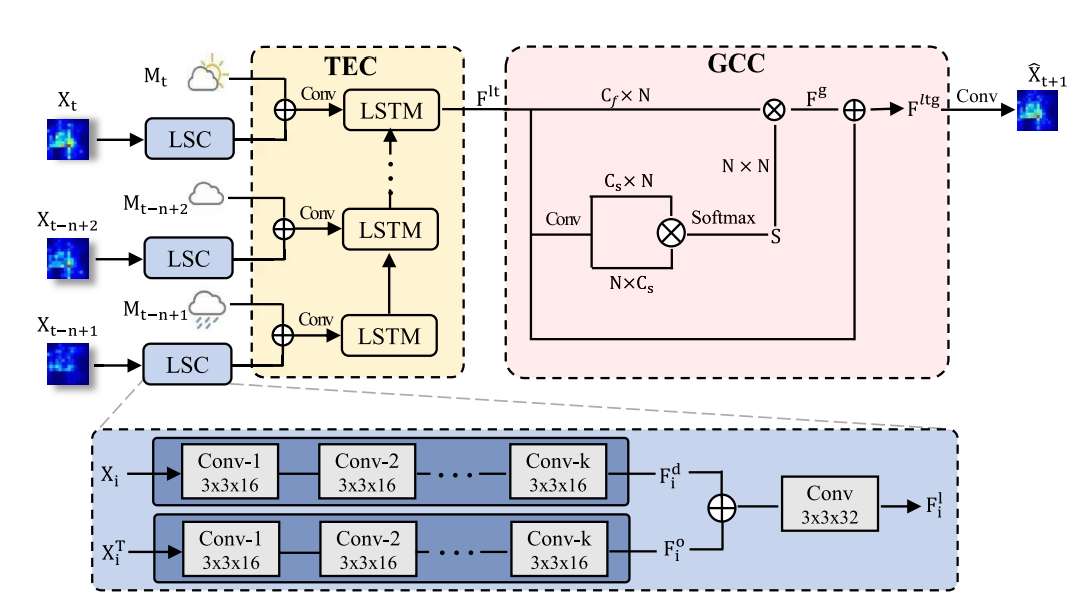Abstract
Taxi demand prediction has recently attracted increasing research interest due to its huge potential application in large-scale intelligent transportation systems. However, most of the previous methods only considered the taxi demand prediction in origin regions, but neglected the modeling of the specific situation of the destination passengers. We believe it is suboptimal to preallocate the taxi into each region-based solely on the taxi origin demand. In this paper, we present a challenging and worthexploring task, called taxi origin-destination demand prediction, which aims at predicting the taxi demand between all-region pairs in a future time interval. Its main challenges come from how to effectively capture the diverse contextual information to learn the demand patterns. We address this problem with a novel contextualized spatial–temporal network (CSTN), which consists of three components for the modeling of local spatial context (LSC), temporal evolution context (TEC), and global correlation context (GCC), respectively. First, an LSC module utilizes two convolution neural networks to learn the local spatial dependencies of taxi, demand respectively, from the origin view and the destination view. Second, a TEC module incorporates the local spatial features of taxi demand and the meteorological information to a Convolutional Long Short-term Memory Network (ConvLSTM) for the analysis of taxi demand evolution. Finally, a GCC module is applied to model the correlation between all regions by computing a global correlation feature as a weighted sum of all regional features, with the weights being calculated as the similarity between the corresponding region pairs. The extensive experiments and evaluations on a largescale dataset well demonstrate the superiority of our CSTN over other compared methods for the taxi origin-destination demand prediction.
Framework


Experiment


Conclusion
In this paper, we introduce a more worth-exploring task, taxi origin-destination demand prediction, which aims at predicting the taxi demand between all regions in the future time intervals. We argue that the information of passengers destinations is also critical for the taxi preallocation systems, since some factors (e.g. the city management rules and the individual preference of drivers) may affect the supply amount of available taxi between two regions as mentioned in Section I. Therefore, it’s essential to combine the predicted taxi OD demand and the aforementioned external factors to optimize the taxi preallocation scheme.
In this paper, we introduce a more worth-exploring task, taxi origin-destination demand prediction, which aims at predicting the taxi demand between all regions in the future time intervals. We argue that the information of passengers destinations is also critical for the taxi preallocation systems, since some factors (e.g. the city management rules and the individual preference of drivers) may affect the supply amount of available taxi between two regions as mentioned in Section I. Therefore, it’s essential to combine the predicted taxi OD demand and the aforementioned external factors to optimize the taxi preallocation scheme.
How to divide a city into different regions is still an open problem. In the future work, we will explore a better region partition manner, with which the spatial information and land use homogeneity information can be efficiently used simultaneously. Meanwhile, our work can be extended by adding more information to the network, such as the periodic taxi demand and the Point of Interest (POI) in each region, which may help to further boost the performance. Finally, we will cooperate with some taxicab requesting platforms and optimize their taxi preallocation systems with the prediction OD demand and the aforementioned external factors. Such systems are expected to decrease the inefficient operations of the taxi industry.
References


